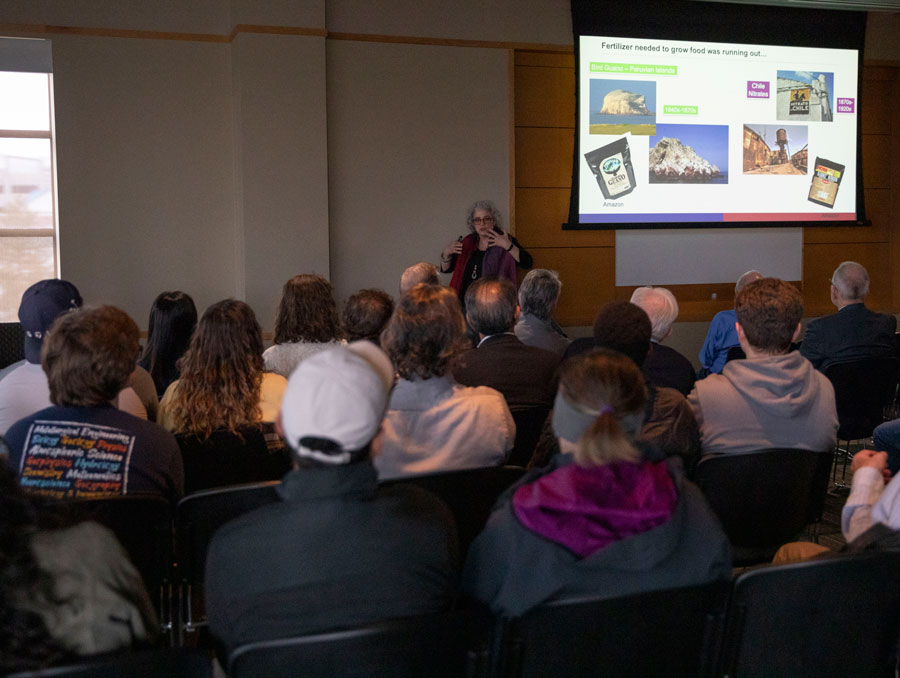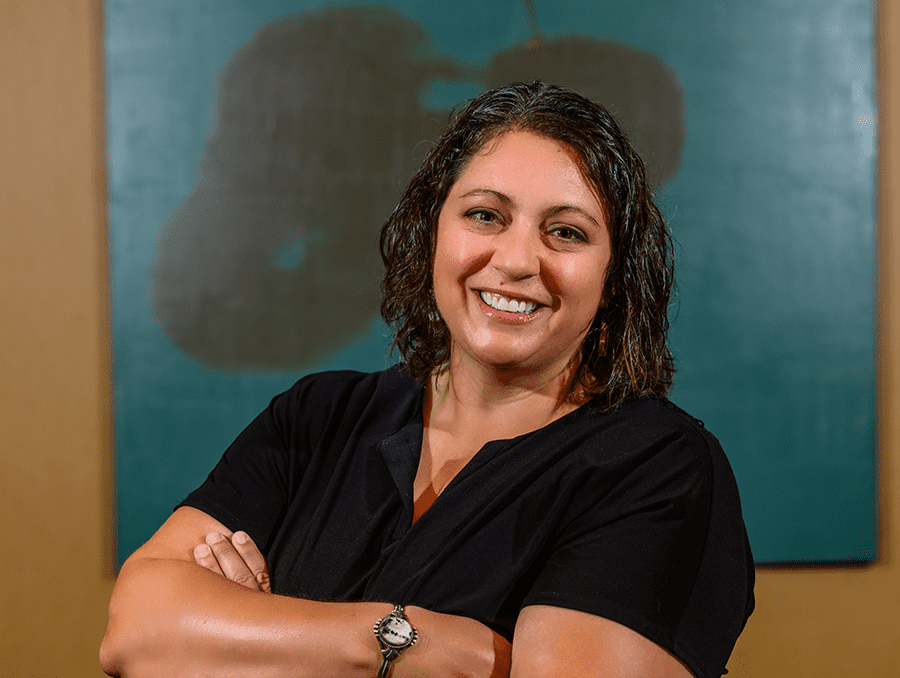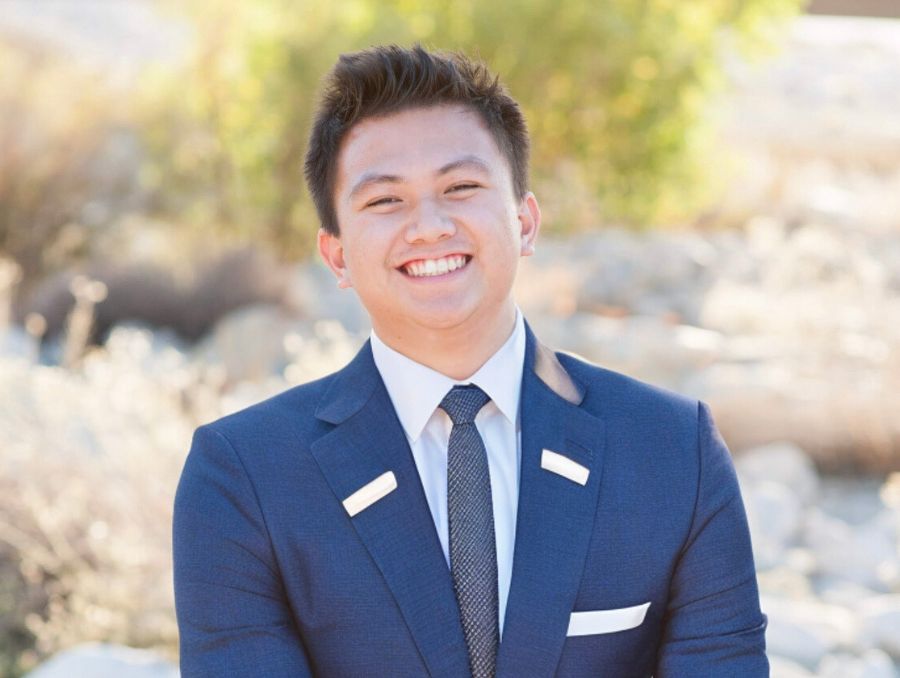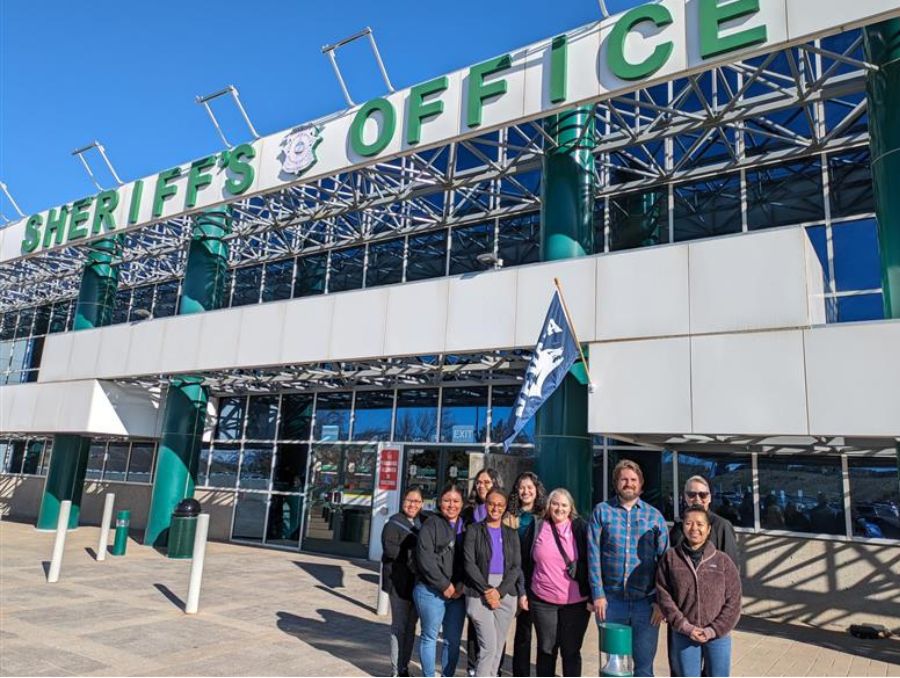Taken together, the two segments that aired last month on ESPNU during nationally televised University of Nevada, Reno men’s and women’s basketball games at Lawlor Events Center add up to a little more than a minute.
But for Damian Tromerhauser, a student in the University’s Reynolds School of Journalism, the opportunity to tape the two segments with an ESPN producer and crew has been something that has taken on a life of its own.
Tromerhauser had e-mailed ESPN with his ideas. One idea was to dispense with the myth that Reno is a suburb to Las Vegas, which, as every silver-and-blue-blooded northern Nevadan knows, is like saying Boston is a suburb to New York City. The other was to correct the often grating mispronunciation of the word “Nevada,” which, as visiting politicians and play-by-play sports announcers can attest, can be as tricky and perilous as ice climbing without crampons.
The two Tromerhauser segments, with the 21-year-old junior from Silver Springs, Nev., in front of the camera, aired during ESPN’s coverage of Nevada’s women’s game on Jan. 26 against Louisiana Tech and during the Wolf Pack’s men’s game on Jan. 30 against Hawaii.
“The first one was maybe 45 seconds and the next one was maybe 35 seconds,” Tromerhauser recalled recently. “It’s funny, because one of my friends said, ‘That’s not very long.’”
Then Tromerhauser, a print major who aspires to write and report on sports, paused and smiled, remembering how difficult it was to talk coherently while bathed in the blazing, blinding white light of the camera.
“But believe me,” he said, “thirty-five seconds … it’s a long time.”
Tromerhauser, who covers both men’s and women’s basketball teams for the student newspaper, The Nevada Sagebrush, said his two story ideas stemmed partly from common misperceptions about Nevada, and partly from some of the training he has received as a student in the Reynolds School.
The misperceptions and mispronunciations have always been part of the Nevada experience, yet seemed fresh enough to spark an interest from ESPN. Although Wolf Pack forward Luke Babbitt is putting up Western Athletic Conference Player of the Year-worthy numbers, Tromerhauser was savvy enough to realize that ESPN would usually tell that type of story during its coverage of game action.
What was needed was something a little different – and what’s more different than a region’s hypersensitivity about its location relative to its southern counterpart, or, for that matter, the irritation a state can feel when its name becomes so mangled beyond recognition it can come to sound like a doctor performing a physical on a flu-ridden patient?
“As we were emailing back and forth, it was obvious they were looking for something more outside of the box, something that was more than just athletics … something more from a student’s perspective,” Tromerhauser said.
Tromerhauser also harkened back to advice given to him by one of Reynolds School of Journalism professors, Paul Mitchell, a former sportswriter for the Philadelphia Inquirer and The New York Times.
“Paul’s really taught me a lot,” Tromerhauser said. “One of the main things he’s taught me is that you constantly have to think about new ideas, and that you constantly have to be one step ahead of everybody else.
“That probably helped me with ESPN. You have to think of new ideas that other people wouldn’t pitch to them.”
Such astute thinking was nothing new to Tromerhauser.
In a short time as a writer for the Sagebrush, he’s shown a keen ability to embody many of sportswriting’s best practices. Perhaps the finest sportswriter there has ever been, the former Sports Illustrated writer and novelist Dan Jenkins, has said of covering sports, “You not only cover it. You have to be a caretaker.”
Recently, in the best Dan Jenkins tradition, Tromerhauser took it upon himself to stir things up and write in the Sagebrush that more fans were needed to support the women’s basketball team. His point was well-made. Under coach Jane Albright, the Nevada women have shown a rare capacity of spirit, such as overcoming a 21-point halftime margin in a recent road game to eventually post a remarkable win at New Mexico State.
Yet, sadly, such road miracles have been largely ignored. The women rarely play before more than several hundred fans at Lawlor.
“I’m not saying I don’t like watching the men,” Tromerhauser said, “because they have a good team, too. But the women, I don’t know if it’s because they don’t get that respect, or it’s because they play in front of 700 fans, they always play hard and bust their butts. To go there and cover them and watch them play hard, team basketball, it’s a shame more people don’t come out and watch them play.
“They deserve it.”
(The power of Tromerhauser’s pen should never be underestimated. In the next game the women played at Lawlor following his column, attendance spiked to a season-high 1,572.)
Tromerhauser’s enthusiasm for what he does is clearly something that others notice. Take, for example, his experience of watching – albeit via his laptop on press row at Lawlor, while actually covering a men’s basketball game – the women’s amazing road comeback against New Mexico State.
Even though it was on his laptop, the experience was surprisingly low-tech.
“I was watching the men’s game live, right in front of me, and then during timeouts, I’d turn to my laptop,” he said. “It wasn’t a live broadcast. It was a basketball court, and an arrow would go this way, and it would be green if a team made a shot, red if they missed it. Even though I was paying attention to the men’s game, my attention kept coming back to the women’s game. Pretty soon, it was, ‘Oh my gosh. They were down by 21 at halftime … and they’re going to win this?’
“I guess I must’ve been kind of loud about it, because all of a sudden, I wasn’t the only one paying attention to my laptop. There were four people behind me, and two people squeezed in next to me.”
Tromerhauser said that he enjoys everything about sportswriting, as well as learning about journalism from the faculty in the Reynolds School.
“The J-School’s amazing,” he said. “The professors are more than willing to help you at any time. They have so much experience, and you can pop into anyone’s office.”
He said is relationship with his adviser, Saundra Keyes, the well-respected former managing editor of the Miami Herald, is just one example of the special bond that exists between teachers and students in the school.
“I had a friend with me one time when I had to stop by Saundra’s office,” he said. “When I walked in, I said, ‘Hi, Saundra’ and then I sat down and started talking to her. When I walked out, my friend said, ‘You call your professor by her first name?’ And I said, ‘Sure. It’s always comfortable in the School of Journalism.’ Your professors are never ‘Professor Keyes.’ It’s always, ‘Saundra.’
“That’s a real big plus of that school.”
It helps, too, that students such as Tromerhauser are so motivated to do so well.
In many ways, even though his professional sportswriting career is still to be realized, Tromerhauser is already a professional. He’s writing about athletes and teams he finds fascinating. He’s reporting what the athletes and coaches have to say. He’s even offering his own insight, and when, needed, an occasional “caretaking” hand.
“I love it,” he said. “I mean, you get into the game free, there’s free food, there’s free drink, you watch the game, and you’re able to share some of your insights about the game by writing a story about it. You have access to the players and coaches that people don’t normally have. Other than being a pro athlete, what I do is the next best thing.”











